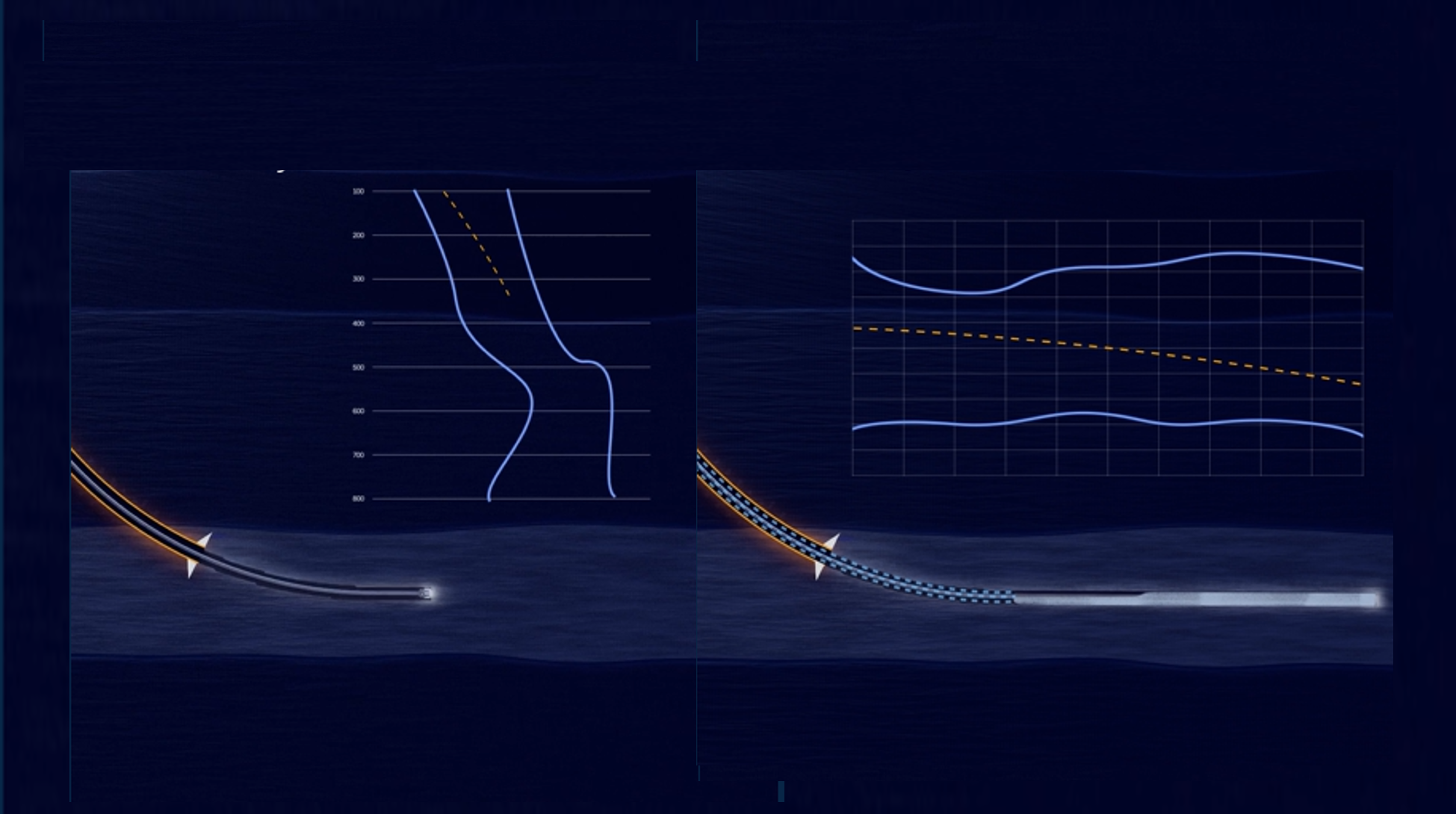Conventional drilling has served the industry well for decades. With established practices and equipment, operators are drilling countless wells safely and successfully. But as the industry moves into deeper waters and faces increasingly complex reservoirs, the limitations of conventional methods become harder to ignore. The question isn’t whether conventional drilling works — it’s when it stops being enough.
Narrow Drilling Windows – A Critical Limitation
One of the biggest challenges in modern offshore drilling is narrow drilling windows. In deepwater wells, the gap between pore pressure and fracture pressure is often extremely small. With conventional drilling, staying within this window becomes a balancing act that is difficult — sometimes impossible — to achieve.
Every added psi of Equivalent Circulating Density (ECD) can lead to lost circulation, while dropping slightly under balance means taking an influx. Conventional drilling isn’t designed to handle these razor-thin margins with the required level of precision.
Watch webinar: Deepwater MPD | Introducing EC-Drill® Dual MPD
Facing Depletion
Another common challenge is drilling in depleted reservoirs. In highly depleted fields, even unweighted fluids can generate losses. To continue drilling — and to extend well reach into untapped zones — operators need the ability to reduce wellbore pressure in line with the actual degree of depletion. Without this flexibility, many mature fields risk becoming uneconomical to develop further.
Efficiency and Rig Time
Conventional drilling also have limitations when it comes to efficiency. Because well pressure cannot be adjusted dynamically, operations such as tripping, casing runs, or cementing must often be slowed down or carefully staged to avoid pressure-related risks. This cautious approach increases rig time and makes it difficult to keep projects on schedule, particularly in deepwater environments where every extra day translates into significant cost.
Safety and Early Detection
Safety is another critical area where conventional drilling has its limitations. With conventional systems, influxes are detected when volume or flow changes are seen at the surface, causing a delayed awareness. This delay increases both the size of the influx and the complexity of managing it.
By contrast, MPD systems like EC-Drill® and EC-Drill® Dual MPD provide early detection through subsea sensors. These sensors identify anomalies in riser pressure and pump speed well before they are visible at the surface, allowing operators to act quickly and keep the well under control. They are continuously monitoring the well regardless of operation and will detect volume changes at any time.
Check out this case study: EC-Drill® Instant Kick Detection Demonstrated on Deepwater Well
Improved Well Design
MPD also provides significant design benefits in deepwater wells, where costs are highest. Even if a well could be drilled conventionally, applying MPD can often eliminate an entire section.
The benefits include:
- Direct cost savings from drilling fewer sections.
- Use of standard bit and casing sizes.
- Better clearance when running casing and liners.
- Reduced likelihood of contingency liners.
These design efficiencies not only save cost but also simplify well construction.
Additional reading: Maximizing Savings with CML
Key Takeaway: The Tipping Point
So, when is conventional drilling not good enough?
- When the well has a narrow pressure window, and/or is depleted.
- When the cost of flat time and inefficiency threatens the project’s economics.
- When early detection and rapid response are essential to maintaining well integrity.
- When looking to optimize operations through better well planning.
In these situations, sticking to conventional drilling can mean missed opportunities, higher costs, and increased risks. The industry has already seen that advanced MPD technologies can transform these challenges into manageable operations, and in many cases, they make the difference between a well that succeeds and one that fails.
Get the latest updates
Want to stay updated on the latest knowledge articles and news from Enhanced Drilling?
.jpg?width=290&name=Snorre%20Lutnes%20(gammelt%20bilde).jpg)







